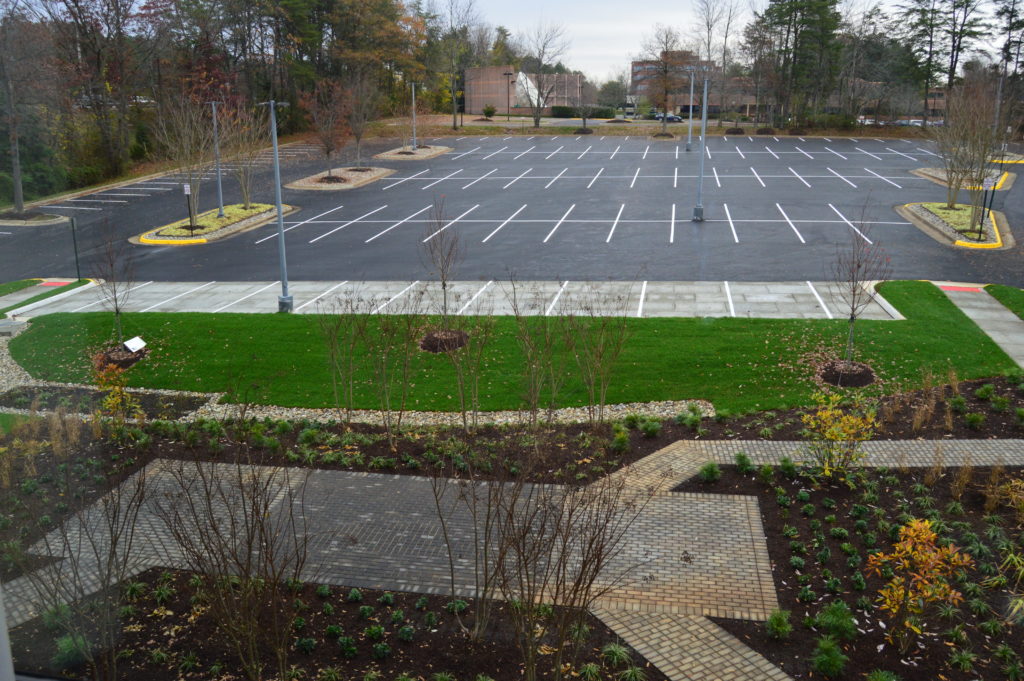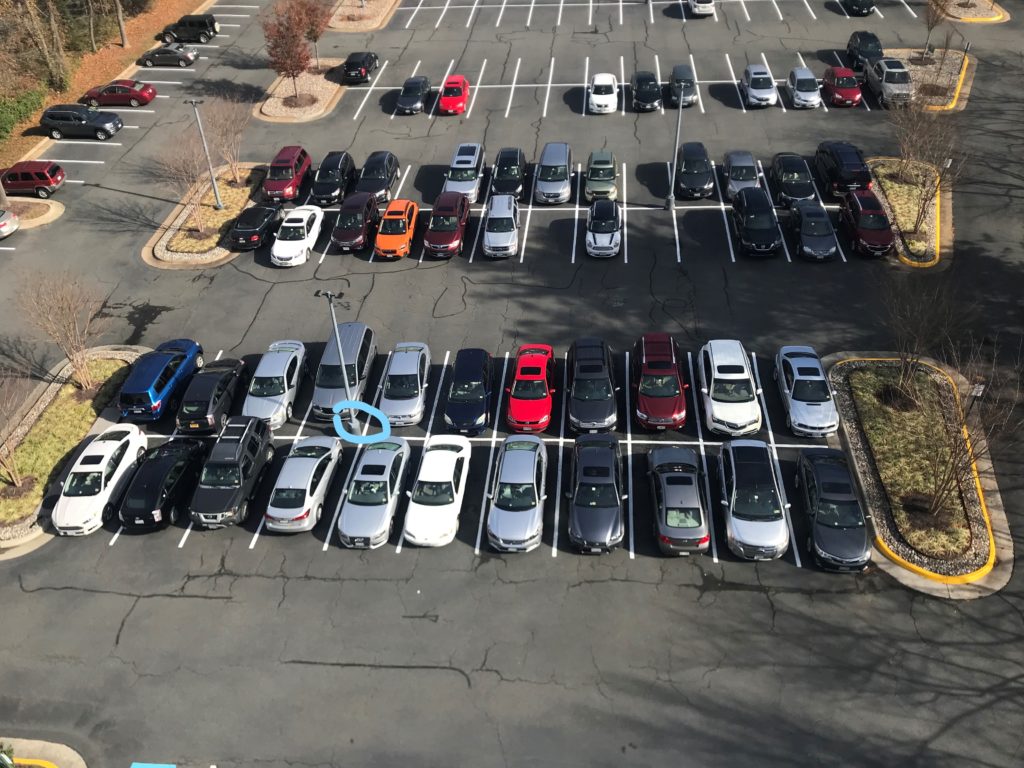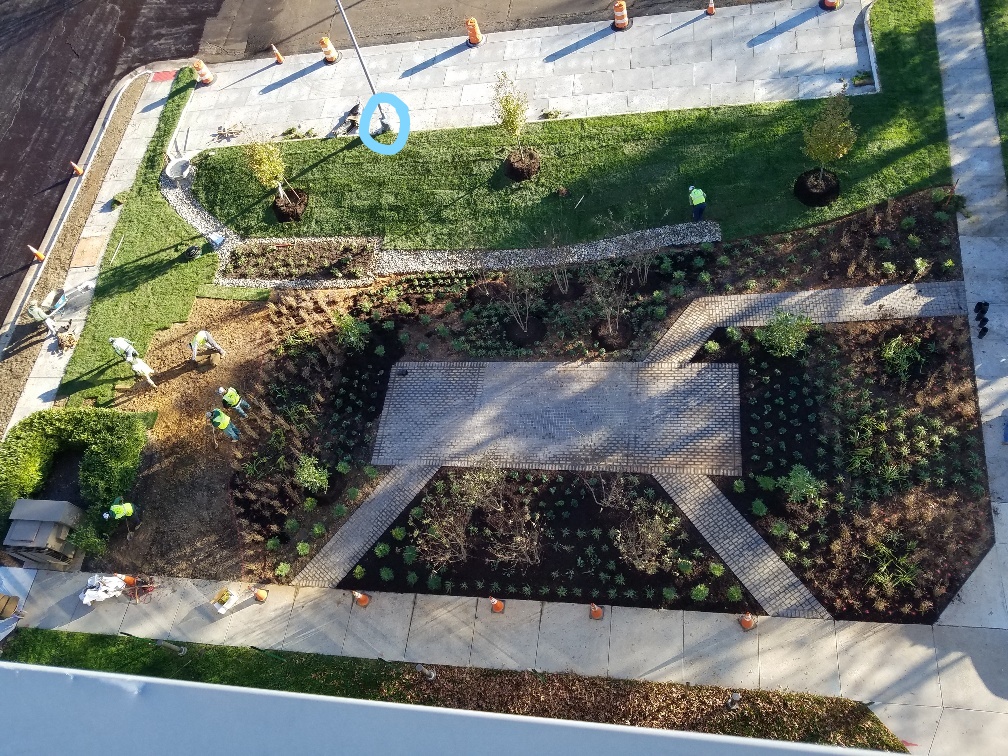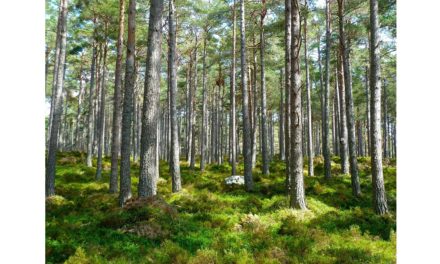The American Society of Civil Engineers (ASCE) earlier this month unveiled a newly renovated parking lot, featuring an array of green infrastructure measures and educational signage, at its headquarters in Reston, Virginia. ASCE Executive Director Tom Smith in a statement described the renovation as transforming a potential source of Chesapeake Bay water pollution into a living classroom.
“Thanks to the vision and efforts of staff and volunteers, this project will contribute to the health of the Chesapeake Bay and enhance the aesthetic and functional appeal of our property,” Smith said.
‘Walking the Talk’ on Sustainability
From the outset of the redesign project, ASCE sought to incorporate state-of-the-art approaches appropriate for the organization, which invites thousands of guests each year to its six-story headquarters building.

In May 2019, for example, surveyors used drones to map the existing lot and identify ideal locations for green infrastructure. ASCE’s analysis concluded that about 560 m2 (6,000 ft2) of impervious asphalt surfaces could be replaced with permeable, interlocking pavers. Unlike traditional surfaces, interlocking pavers accept runoff into the joints between pavement sections, filtering it slowly through layers of aggregates before conveying it into underlying soil. The interlocking pavers reduce pollutants, slow and capture runoff, and help to recharge local groundwater aquifers.
For safety purposes, however, some segments of the lot required the use of less permeable surfaces that were durable enough to withstand the weight of heavy vehicle traffic. Rather than conventional pavers, ASCE opted for an alternative material called dry-process rubberized asphalt. According to ASCE, the mix behind the asphalt contains about 622 scrap tires, putting an automotive waste product into productive use. In addition to being more sustainable, dry-process rubberized asphalt helps extend pavement life, reduces vehicle noise, and comes at a lower cost than traditional pavers over its lifespan.
Between the lot and the building’s front entrance sits a small courtyard area, which ASCE outfitted with a series of new biofiltration systems. These systems — which include such common green infrastructure elements as bioswales, constructed wetlands, and green walls — combat both water and air pollution by using living materials to capture, consume, or transform contaminants. The redesign project also delivered new, porous concrete to pedestrian walkways along the courtyard, as well as to parking spaces.
Each new sustainability feature includes weather-proof educational signage to outline the intervention’s benefits as well as implementation considerations for visitors. Typical guests to ASCE headquarters include professional engineers, educators, students, and policy officials.
“This project is an example of ASCE walking the talk on sustainable infrastructure,” said Smith.
Promise in Parking Lots
When 2.5 cm (1 in.) of rain falls on 0.4 ha (1 ac) of impervious-surface coverage, data from the Chesapeake Bay Foundation (Annapolis, Maryland) estimates that it generates about 102,000 L (27,000 gal) of stormwater runoff. Parking lots typically feature vast expanses of impervious surfaces, and a steady stream of vehicle traffic means runoff from parking lots often contains oil, tire rubber, heavy metals, and any number of other water contaminants. For that reason, stormwater professionals increasingly are looking toward parking lots as an opportunity to demonstrate the versatility of green infrastructure.
Between 2019 and 2020, for example, the Water Environment Federation (WEF; Alexandria, Virginia) partnered with the U.S. Environmental Protection Agency and the Chesapeake Bay Trust (CBT; Annapolis, Maryland) to create green infrastructure demonstration projects out of two parking lots within the Chesapeake Bay watershed.
At a compact, urban site in a suburb of Washington, D.C., project partners designed a novel series of suspended green roof trays hanging over parking spaces that would receive runoff from a silo-style rain barrel on the building’s roof. The system would deliver the runoff from around the parking lot into new biofiltration areas in a highly visible way, in addition to repaving much of the lot itself with permeable materials. At a large public park in Lancaster, Pennsylvania, experts proposed using the roofs of the property’s central pavilion and bike rental shop to capture runoff without downsizing the parking lot beyond the needs of its guests. The team recommended a series of modular, stackable rain tanks outfitted with an inverted siphon system to collect ground-level rainwater at higher elevations, enabling versatile stormwater management while minimizing construction disturbances.






